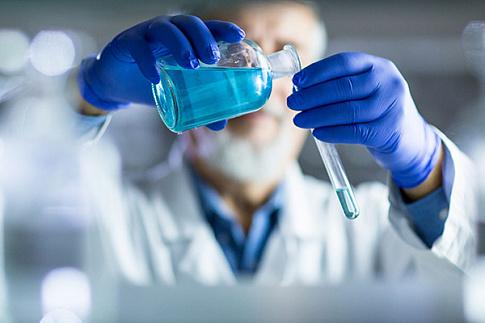
Process requirements
With implementation of SanPin 2.1.4.559-96 "Drinking water", as well as SanPin 2.1.5.980-2000 "Hygienic requirements for the protection of surface waters," a new regulatory framework has been developed. It provides for quality control of various water bodies in terms of either bacterial or viral contamination, in particular coliphages and enteroviruses.
Due to the low concentration of viruses in water, an important primary stage of virological research is their concentration from large volumes of water (10-100 L and more to 10-50 ml).
The minimum size of pathogenic viruses is 0.03 micrometers, which is much smaller than the pore size of the microfiltration membrane. Therefore, low-productivity membranes (nanofilters) or microfiltration membranes with increased viruses sorption capacity can be used for their isolation.
In 2003 – 2006 Sysin Research Institute for human Ecology and Environment hygiene of the Russian Academy of Medical Sciences studied the process of viruses concentration from variety of water bodies using the membrane module MFM-0142 produced by "Technofilter" with a specially designed membrane for virological analysis MMPA+.
System layout using compressor and head tank
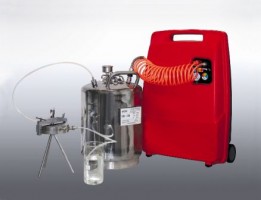
The system for virological analysis consists of a membrane module MFM-0142 with MMPA+ - membrane, a head tank (10 - 20 liters) and a compressor. The water being analyzed is poured into a head tank, which lid of is then tightly closed. The compressor ensures head tank pressure of 1.0-1.5 bar. During filtration, the filtrate passes through the outlet while virus concentrate remains on the membrane of the module.
Virus concentration system layout with peristaltic pump
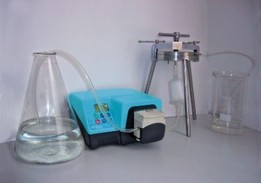
For filtering large amounts of test water, a layout with peristaltic pump is proposed. The water from the service tank is supplied to the MFM-0142 membrane module by means of peristaltic pump. After passing through the module the filtrate flows into the filtrate receiver, and the concentrate remains on the membrane. For filtering highly contaminated water, the system is equipped with a prefilter in the form of a capsule filter.
Virus elution stage
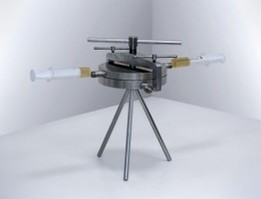
Previously the elution method involved removing the membrane from the module and mechanically flushing the viruses from its surface with a stream of eluent from the pipette. But it has posed a certain risk of infection. In order to avoid this risk the process should be done in a laminar box, which entails significant difficulties and significant financial costs.
"Technofilter" has developed method in which the elution of viruses is carried out without membrane extraction, i.e. in the closed module mode.
Viruses are eluted from the membrane without disassembling the module (in closed state), by forcing the eluent through in three steps by 20 ml using two disposable syringes. The syringes, one with the eluent, are connected to the docking devices in the water line and in the filtrate outlet line. All connecting hoses are fitted with quick-release couplings. In each step the eluent is forced through the membrane by these syringes no less than 8 ÷ 10 times.
Recommended by Sysin Research Institute for human Ecology and Environment hygiene.
Benefits
The main advantages of MFM-0142 membrane module
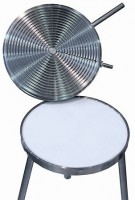
The main advantages of MFM-0142 filter module (TU 3614-005-32915592-2005) are:
- the possibility to combine concentration and elution processes in one device,
- high effectiveness of concentration and elution due to the original design, which provides an intensive mass transfer of liquid over the membrane and through it,
- gentle operating mode of viruses concentration and desorption (filtration is carried out in close to neutral conditions without using any reagents);
- decrease amount of eluent (60 ml),
- Epidemiological safety of personnel (elution is carried out using the syringes without dismantling the module),
- Easy and secure operation.
Features and Benefits of MMPA+
The high efficiency of MMPA+ -0.2 μm membranes was confirmed by numerous tests (filtration of river water, well water, as well as wastewater). In 2007, in Nizhny Novgorod Research Institute of Epidemiology and Microbiology named after. I.N. Blokhinoy MMPA+ -0.2 membranes were used for concentrating of hepatitis A viruses, one of the hard-to-cultivated viruses. Artificially prepared HAV suspensions in distilled water taken in the dilution from 1 · 10-4 to 1 · 10-8 PUL were used.
It has been proved that the use of MMPA + -0.2 membranes provides increased sensitivity for controlling CAA by 2 orders of magnitude in comparison with previously known methods. At the same time, reliable virus retention is achieved even at concentrations below the threshold sensitivity of the method used. It was shown that the concentration of viruses on the membrane of MMPA + -0.2 can be carried out at neutral pH, in contrast to nitrocellulose membranes, for which a sufficient level of isolation is achieved at a pH below 4.0. Since elution of collected viruses is not always convenient after concentration, it is important that the process conditions and the filtrate itself do not influence the viability of the virus (extreme pH values can inactivate some viruses). The MMPA + membrane meet these requirements to the fullest extent.
Comparative tests of MMPA+ -0.2 membranes allows for the conclusion about its superior performance in terms of retention efficiency and universality.